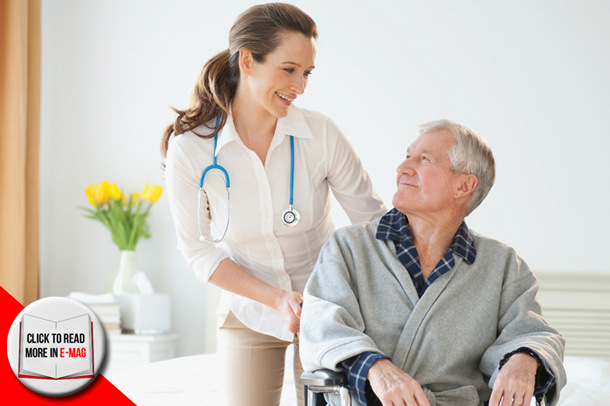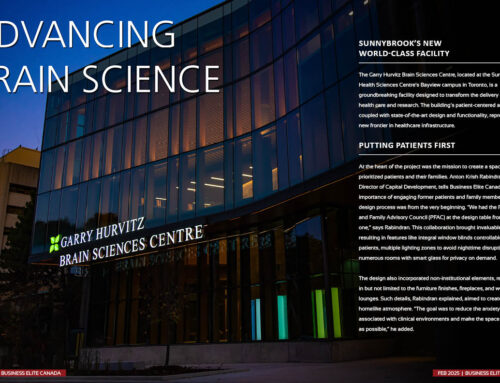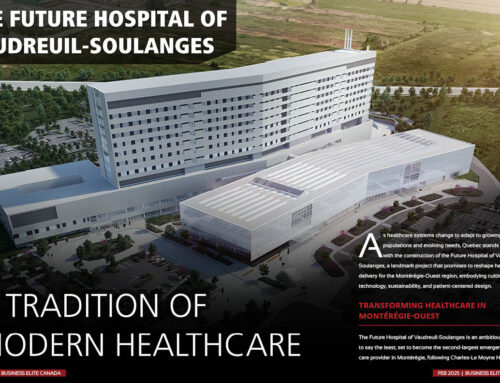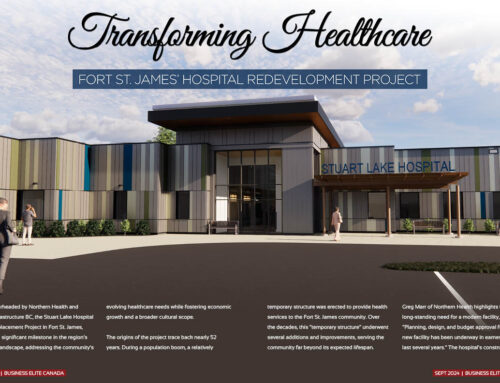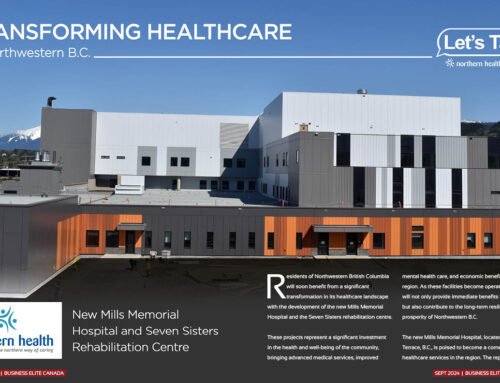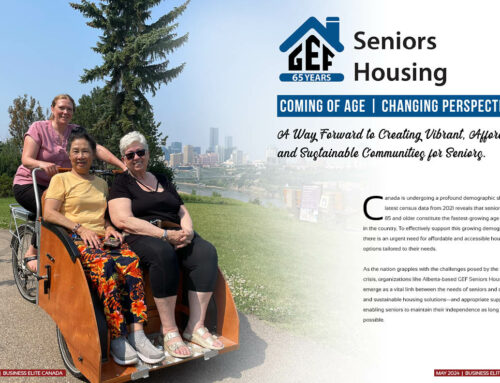Revolutionizing the elderly healthcare industry
By: Mudeeha Yousaf
Time is of the essence for the medical world that relies on only the best of the best when it comes to patient health and livelihood. Technologies are skulking their way into healthcare facilities to provide accurate results faster, and with a greater need for creative novelties come companies who wish to break into the market to provide these services. TeleMedic Inc. – a company that conceives and develops wireless medical systems that monitor patient vital signs, and a seniors care management platform – is one such company that is breaking the mold within the elderly healthcare domain. Based out of Quebec, the company has broken into emerging markets and has changed the way the seniors’ healthcare industry works through the use of their innovative advancements.
Raymond Carriere, President and CEO of TeleMedic, had dreams of bringing the company to another level after being an investor since 2004, and ultimately became the head of the company in 2008. “It was more of an R&D company, and my objective was to make it a successful commercial company,” he says. The business made headway in 2012 after developing a product that had the capacity to reach a commercial audience, which was adapted to meet the request of their ongoing market studies. “There was a resistance to change because most people are still geared towards being on paper, so what we had to do is sell them a new process of work — a computerization, a wireless care management process — and a new viable product.”
TeleMedic prides itself in offering a complete web-based system that records vital signs and all care activities on a real time basis, and wirelessly transmitting this data to the patient file. “We were a bit ahead of our time in those days because the medical field was not that computerized… we had the capacity of taking this information, but nobody was able to use it because we had no platform, so we developed a platform and a type of electronic health record… we built this software technology to go with our hardware and now we have a complete system which we are successfully commercializing in LTC facilities, retirement residences, pharmacies as well as private clinics.”
The ramifications of using such an intuitive technology is that it takes away the geographic aspect of it, so physical separation from the client and the patient will be a thing of the past, and be replaced by a tool that eliminates barriers. “The efficiency process is enhanced, the workflow is optimized, there’s less risk of errors and time waste, and there is a better follow up on all of the procedures. For example, if a nurse is not on the premises during a medical emergency, she can online access the file right away and view what can be done and take appropriate action,” says Carriere. The other healthcare professionals can also have access to the patient medical file and see and add notes, and the tool allows for both patient and caretaker to be more in control via the web-based, bi-directional system and this will, nonetheless, enhance communication and boost patient safety.
The company has conducted in-depth research before launching the system, and had patents on a vital signs transmission process. Their project portfolio consists of work done with the Telehealth Exact Research Center for the U.S. Army as well as the Canadian Space Agency, where they aided in simulating the space environment and used their technology to transmit the vital signs of the astronauts — a joint venture with McGill University. Their engineers have worked with the Canadian Space Agency and their technology was “ahead of everything else, which proved that we were on the right track after these successful projects.”
Though, after the financial crash in 2008, Americans wanted to conduct their business with domestic companies not external to their country, so expanding to international markets became difficult to enter. “We have patents for Canada, the U.S. and Western Europe… though we have certain logistics problems with Europe because of the electrical components.” The firm wishes to expand in the rest of Canada, having been successful in Quebec, and have assembled a bi-lingual system and are in the midst of working on a Spanish version for the international market. “We have all the Canadian certifications… Health Canada grades our equipment and we are ISO 9001/13485, FCC and CSA certified. Our standards of quality are very high and we’re audited every year by the ISO organization.” To further enhance efficiency and accessibility, the company is making its healthcare management system available for tablets and intelligent phones, as well as increasing brand awareness through attending trade shows across the country.
Currently, the advanced system can track up to seven vital signs, including high blood pressure, heart rate, glycaemia, weight and high cholesterol, and this data is automatically transmitted through the “one-stop-system.” The paper-less process follows algorithms and mathematical patterns, transforming the data into a graphic vision on a timely basis in order to determine if something is incorrect or critical. “A paper-based system is always time consuming and creates a risk for human error, while there is no human error in the transmission or the taking of the vital signs and procedures… We follow up on all the activities and tasks, and the system will generate periods of time where you want to determine how things are going… it is a highly advanced process,” advocates Carriere.
TeleMedic has received a great response in the Quebec market place, and this feat secured them one of the top five winners of the InfoWay Health Canada award of being amongst the five best telehealth ideas in Canada. In order to stay ahead of the competition, the company constantly engages in market research and their Research and Development department works tirelessly to develop and improve the product. “We want to be the leader in the health record for retirement and long term care facilities in Canada. We already have many major clients, such as seniors housing group operators. I think we have the best integrated system right now, and we want to keep our technology ahead of the game,” says Carriere. “We have a very high rate of satisfaction amongst our clients and we want to keep it like that. Our reputation is important to us.”
For more information on TeleMedic, visit http://www.telemedic.ca/

